The Complex Artistry and 100-Year History of Berkshire Pro Wrestling
XWA Put on a wrestling show November 22 at the Masonic Temple in Pittsfield that showcased the breadth of regional talent.

XWA Put on a wrestling show November 22 at the Masonic Temple in Pittsfield that showcased the breadth of regional talent.

Extreme Wrestling Alliance (XWA) champion Justin Rando doesn’t hesitate when asked if he thinks wrestling is an art form. “Oh yeah, absolutely,” says the totally shredded Pittsfield native. “You’re talking about athleticism, coordination, flowing from one move to another, and making it feel real. A lot of people call it a dance.”
This past weekend, in front of a packed crowd in the basement of the Pittsfield Masonic Temple, across the street from the storied Colonial Theater, Rando retained his title in dramatic fashion.

Toward the end of the main event, Rando’s opponent, Punk (the dystopian destroyer) pushed champ into veteran ref Vinnie Lax, knocking him unconscious. Seizing his opportunity, Punk hit Rando with a brutal low blow. With his opponent disabled, and the ref unable to adjudicate illegal maneuvers, Punk set up an old pressboard folding table in the center of the ring and put the incapacitated Rando on top. But as Punk climbed to the top of the turnbuckle, Rando channeled power from the furious crowd of hometown supporters. Children jumped up and down in a mob, screamed with joyful, performative rage. At the last moment, Rando sprang to his feet and powerbombed Punk through the table, securing the win. It was a cathartic crescendo that sent the audience home buzzing.
“You have your partner you’re working with, and you’ve got to flow, and hopefully you have good chemistry. And trust,” Rando says. “It’s totally an art. I think more people see it as an art now than they used to.”
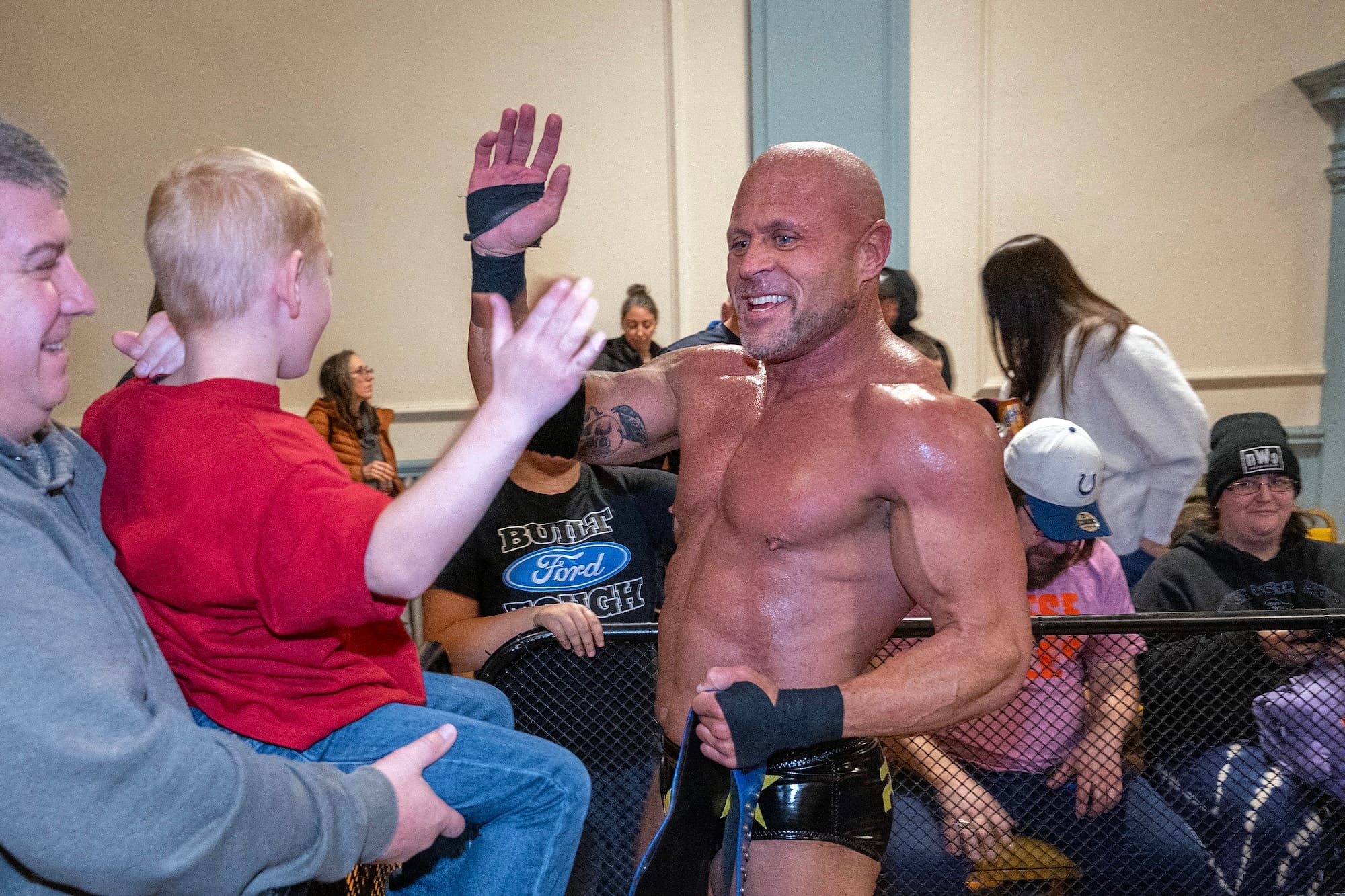
Rando, 45, wrestles in traditional black and yellow trunks, boots, and kneepads. By his own description, his in-ring character draws from the grit and heart more from the cinematic old underdogs like Rocky Balboa rather than the spectacle of modern WWE pageantry.
Rando wrestles under his own name now, no alias, no mask. When he returned to wrestling at 40 after a seven-year break, he made a choice: “If I'm coming back, I'm going to use my real name, and I'm just gonna be me. I'm not going to look for a gimmick.” Rando describes his character as a man fighting for one last great run, a blending of the truck driver’s real biography and mythic iconography.
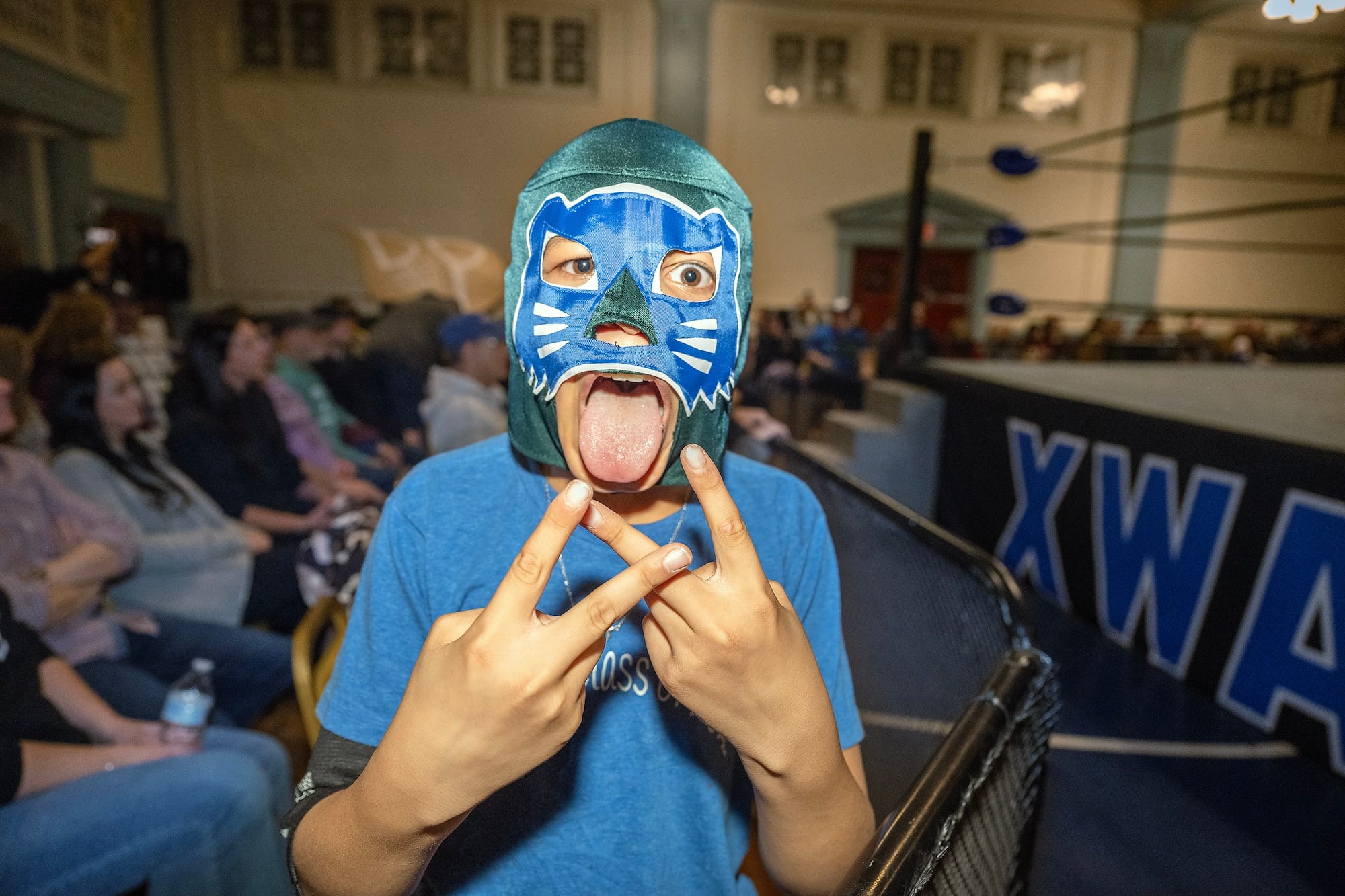
Independent wrestling in a basement with 200 rowdy fans is, at its best, a folk art performance tradition: Movement, choreography, improvisation, character, and story, built on the mystery of what’s fake (kayfabe) and what’s real (a shoot). Yes, the outcomes are predetermined, but the athleticism is real. So are the risks—and, unfortunately, the way some culturally insensitive and jingoistic stereotypes still linger in the ring.
In Saturday’s XWA opening match Mikey Cheese, a hysterical patriotic wrestler with a cheese wedge hat and bright orange gear came to the ring to deafening chants of “USA” and “Cheese.” Facing off against “the Gouda Guy” and the undisputed “Cheddarweight Champion,” was "the jihadist," a distasteful representation of a masked Islamic terrorist waving a flag with Arabic lettering and yelling at women in the crowd to put on hijabs. Worse, during the match, the performer acted out mock Muslim prayers. While there is a long tradition of cartoonish foreign villains in wrestling—like the innocuously cartoonish Russian Comrade Cassanova, who appeared later in the evening, hitting the baby face (good guy) Super Fan over the head with a corn cob—the jihadist, who was beaten soundly by Cheese, crossed the line into disgustingly offensive.
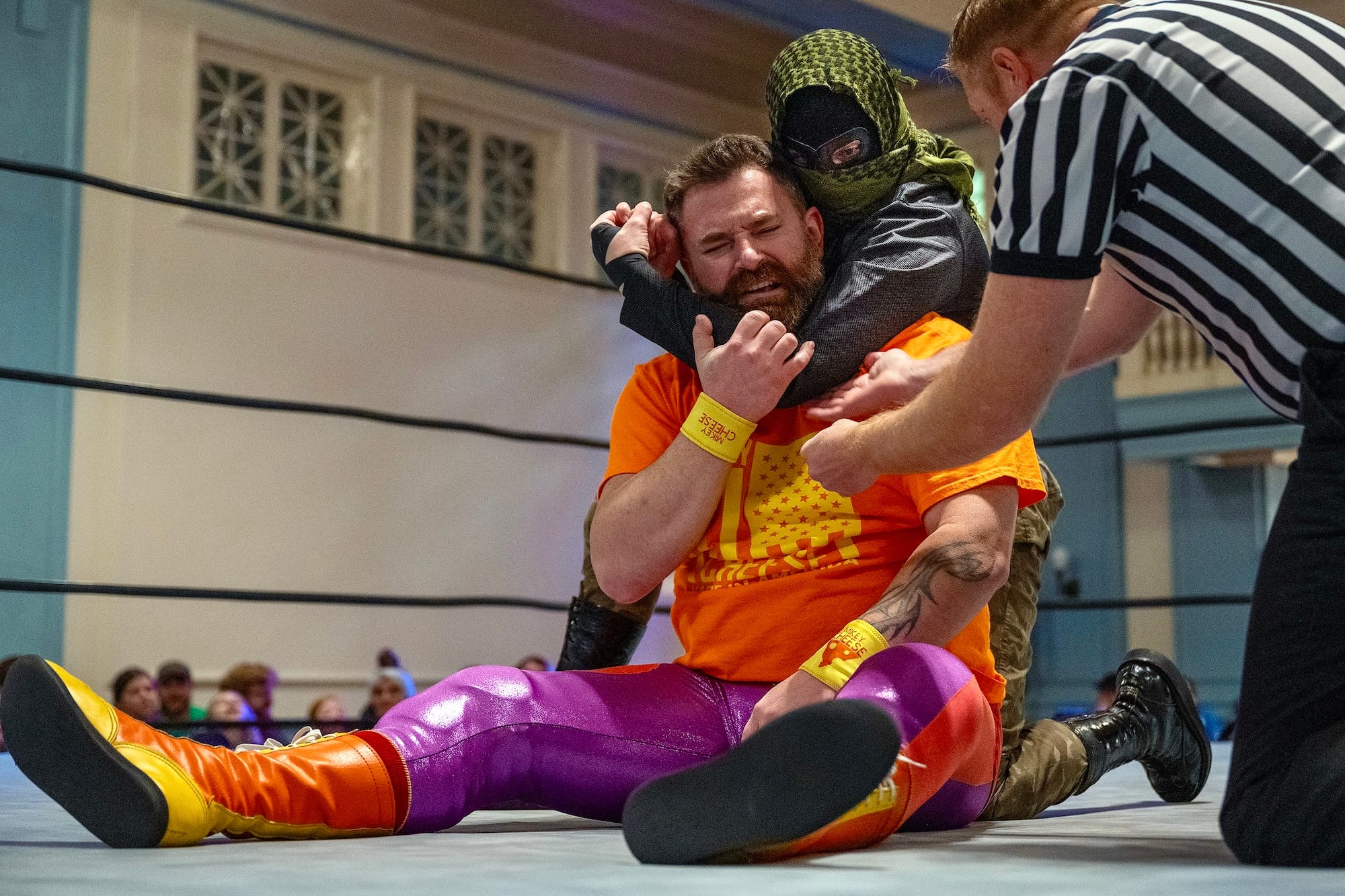
Charitably one could make the argument that there was an unintentionally ironic artistic and political statement to be found in a wrestling match between a racist stereotype and a hyper-patriotic anthropomorphized block of American cheese. But clearly that was not the intent.
This match unnecessarily marred what was otherwise a riveting evening. These retrograde moments reflected poorly on XWA’s decision making and will limit its ability to attract new audiences, but did not take away from the impressive feats of the other performers, like the Music Man, whose character work in his “Loser wears a turkey costume” match against the throbbingly muscular Scott Reed, was second to none.

Another standout performance was the women's match between the heel (bad guy), Vile the Villainess, who taunted the crowd with big sweeping theatrical movements pulled from classic monster movies, and the scrappy newcomer Killer Jada.

Wrestling has deep roots in Pittsfield. In 1930, the Winter Garden downtown packed 1,200 fans to watch world heavyweight champion, and former football star, Gus Sonnenberg defend his title. Locals were enthralled not only by athleticism but by his persona, like Rando, a larger-than-life version of himself.
As decades passed, the region remained a steady stop on the wrestling circuit. In the ’40s and ’50s, wrestlers like the Original Sheik and Chief Big Heart brought their historic rivalry to the area. In the ’70s, the Pittsfield Boys’ Club gymnasium became an unlikely WWF hotbed, hosting Tony Garea, Dean Ho, Chief Jay Strongbow, Killer Kowalski, and even Ricky “The Dragon” Steamboat.
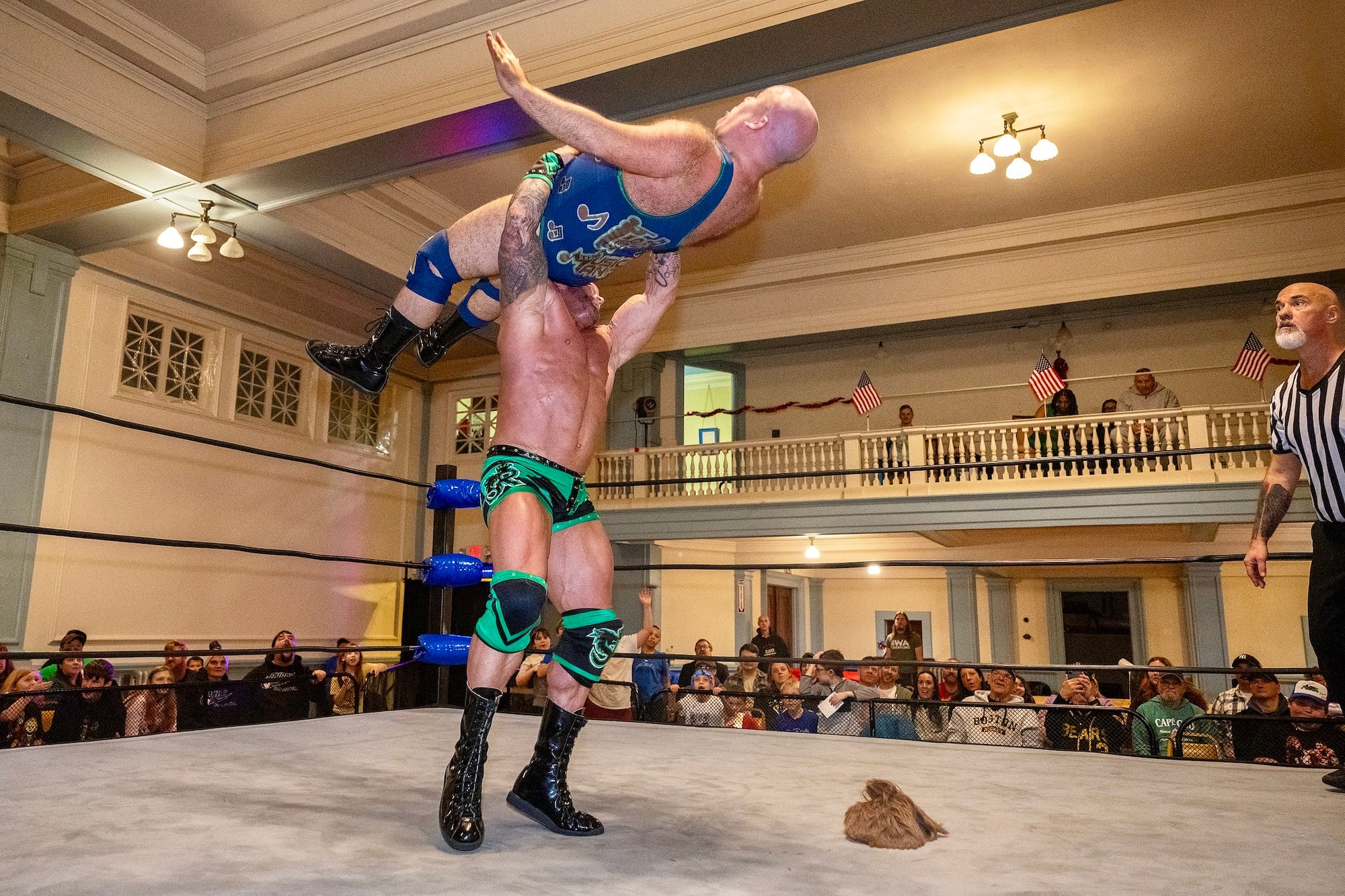
The WWF boom of the ’80s and ’90s saw stars like Bret Hart, Junkyard Dog, Greg Valentine, Yokozuna, and Lex Luger draw roaring local crowds. In the 2000s and 2010s, independent promotions like Northeast Wrestling reignited the local scene with outdoor supershows featuring national stars and rising hometown talents.
XWA has deepened that revival, and Rando has become its face. “We get families of, like, two or three adults and 11 kids,” he says, laughing. “I get a lot of time in Pittsfield to talk to fans.”
The formula that worked over the past century, a mix of archetypal characters, intimate venues, and clear stakes, is the same one Rando leans on today. “I love that Jerry [XWA promoter Jerry Idol] has brought something here,” Rando says. “It’s more kid-friendly. And for the grownups it’s a throwback to the wrestling they grew up with.”
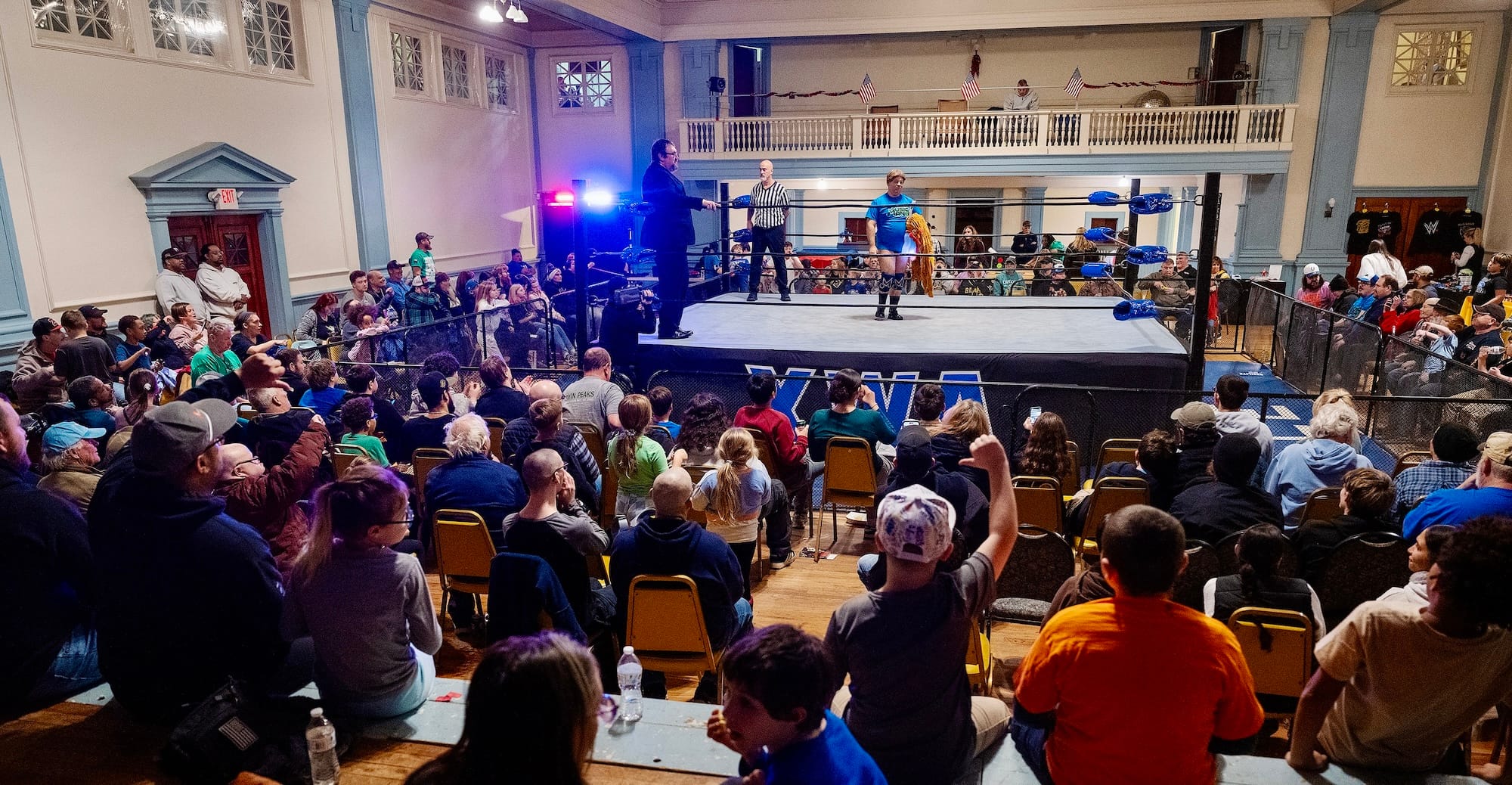
Rando wants to send a positive message to the kids who show up to see him. He signs autographs and stays after shows to talk with young fans. “I’m giving it all I got—110 percnt for as long as I can,” he says. “Don’t let anybody tell you you’re too old to do something. I've had a better run from 40 to 45 than I have in my 20s.”
Independent wrestling isn’t always flawless, crisp, or inclusive, but Justin Rando, the Music Man, Mikey Cheese, Vile, Killer Jay, Scott Reed, and the countless other wrestlers plying their trade for the love of it, deserve to be respected for their commitment to a storytelling art that can simultaneously be grounded and fantastical, inspirational and depraved, ugly and beautiful. At its core, the magic of wrestling is that it is “fake” and real at the same time.
XWA's next event will be held January 24, at the masonic temple at 116 South Street, Pittsfield.